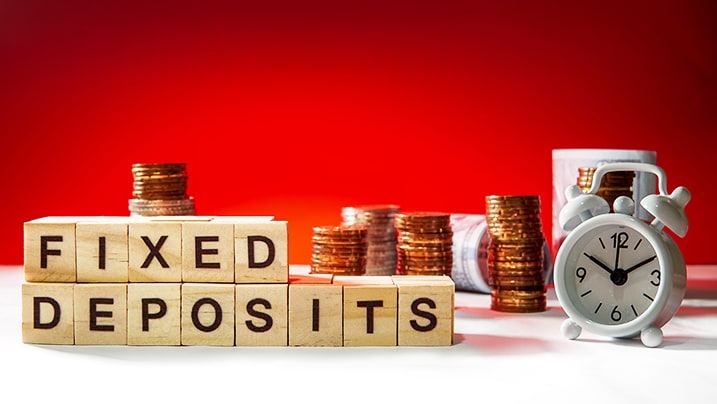
Short-term vs Long-Term Fixed Deposits: Which is Right for You?
Fixed Deposits (FDs) have been a staple investment tool for millions of Indians over the years. The low-risk investment opportunities offered by FDs have made them one of the most attractive investment choices. While there are several types of FDs offered by banks, they can be broadly categorised into short-term and long-term FDs.
In this article, we will explore short-term vs long-term FDs and help you understand which type of fixed deposit is best suited to your needs.
Table of Contents
The fundamental difference between short-term and long-term FDs
A short-term fixed deposit is a type of low-risk investment that ranges from a period of 7 days to 12 months. On the other hand, a long-term fixed deposit has an investment period of more than one year and can extend up to 10 years. Different banks and financial institutions offer varying interest rates on long-term and short-term FDs. Most banks offer higher rates of interest on long-term FDs compared to short-term FDs, but this may differ depending on the specific bank’s policies.
Short-term FDs are more suited for individuals seeking guaranteed returns while still maintaining liquidity over their fixed deposit. On the other hand, long-term FDs are an attractive option for investors who are not concerned with liquidity and want to park their funds for an extended duration of time to earn guaranteed returns.
Analysing short-term fixed deposits
As discussed, the key highlight of short-term FDs is that they offer liquidity, yet guaranteed returns for investors. Moreover, with a wide range of short-term FD tenures available, investors can choose an FD that suits their short investment horizon. Additionally, once your fixed deposit account matures, you can choose to reinvest it into a short-term FD while continuing to earn returns.
You can utilise short-term FDs to achieve various financial goals such as saving up for a vacation, purchasing a big-ticket item, home upgrades, and much more. You can also maintain a short-term FD as an emergency fund.
However, there is a drawback to short-term FDs as well: comparatively lower interest rates when compared to long-term FDs and other avenues of investment. Even with similar interest rates, long-term FDs are much more effective in wealth creation through the power of compounding.
Analysing long-term fixed deposits
The key benefit offered by long-term FDs is the higher rate of interest offered, resulting in noticeably higher returns as compared to short-term FDs. While some other investment tools such as mutual funds or stocks tend to offer higher returns, they also come with a significant risk of losing your capital, making long-term FDs the perfect choice for risk-averse investors. On the other hand, if you are looking for a liquid investment, long-term FDs may not be the right choice for you.
You can use long-term FDs as a financial tool for specific future goals, such as: saving up to buy a house, saving up for your child’s education, saving up for retirement, etc. You can also use an online FD calculator to understand the value of returns you can generate with long-term FDs.
Moreover, online banking options today have made investing in FDs incredibly easy. For instance, you can book an instant fixed deposit with IndusInd Bank in just a few clicks.
The highlights of IndusInd Bank’s Fixed Deposit offering include:
- Instant online FD creation in just three simple steps
- Tax-saver FDs to help you save more
- Highly competitive interest rates for higher returns
- Auto-renewal facility and multiple interest payout options
Key takeaway: Which should you choose?
You can choose to invest in a long-term or short-term FD depending upon your specific financial goal. If you are saving up for something in the near future, short-term FDs will likely fit your requirements. On the other hand, if your investment horizon is on the longer side, and you don’t mind losing liquidity, you can choose long-term FDs.
However, make sure you do your due diligence by considering all available options and carefully going through the terms and conditions of the FD you finally choose to invest in.








